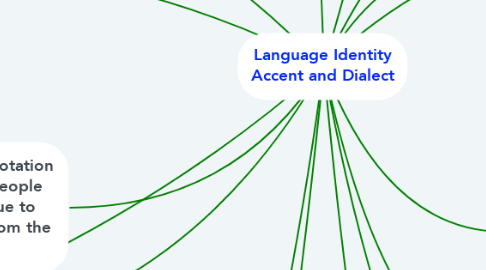Language Identity Accent and Dialect
by Alexandro WinterSköll


1. The language is basically a collection of dialects, where speakers of different dialect in the same language can understand each other.
2. Dialect is used both for local varieties of English.
2.1. Dialect is often thought of as standing outside the language
3. the language is basically a collection of dialects, where speakers of different dialect in the same language can understand each other.
4. Difference between accent and dialect
5. There are some connotation of inferiority about people who speak dialect, due to dialect is excluded from the polite society.
6. When a language is standardized it becomes possible or easy to teach it in a deliberate manner, and it could take different dimensions.
6.1. On ideological dimensions are: social, cultural and sometimes political, beyond the purely linguistic ones.
7. The standardization also requires that a measure of agreement be achieved about what is in the language and what is not.
8. There are some criteria such as: standardization, vitality, historicity, autonomy, reduction, mixture, and de facto norms, that maybe used to distinguish certain language from others.
9. Differents kind of language.
9.1. standarization
9.1.1. refers to the process by which a language has been codiefied in some way.
9.2. vitality
9.2.1. refers to the existence of a living community of speakers
9.3. historicity
9.3.1. refers to the fact that a particular group of people find a sense of identity through using a particular language
9.4. autonomy
9.4.1. a language be felt by its speakers to be different from other language
9.5. reduction
9.5.1. refer to the fact that a particular variety may be regarded as a sub-variety rather than as an independent entity
9.6. mixture
9.6.1. refers to feelings speakers have about the "purity" of the variety they speak.
